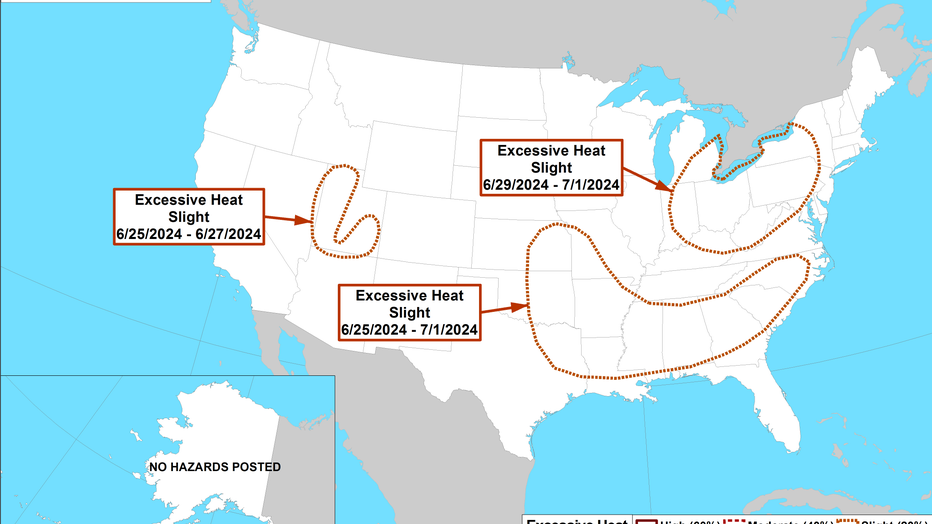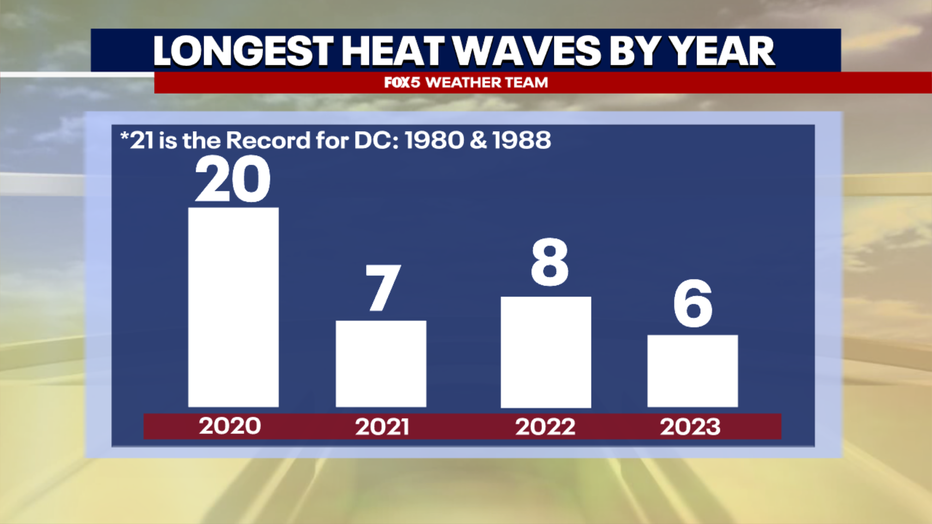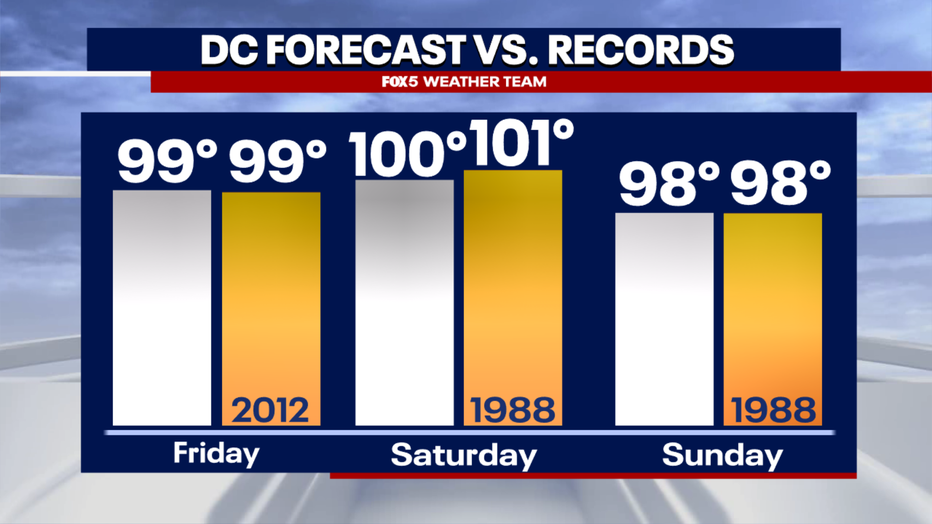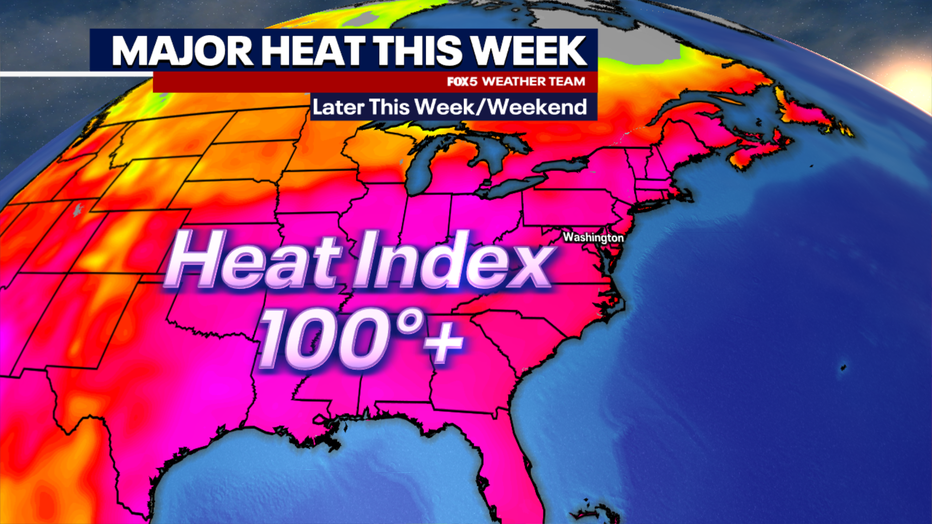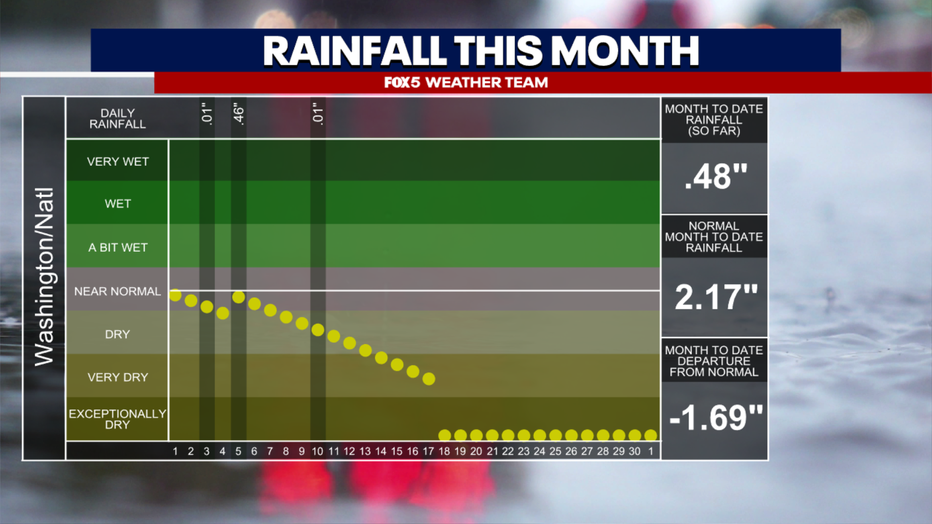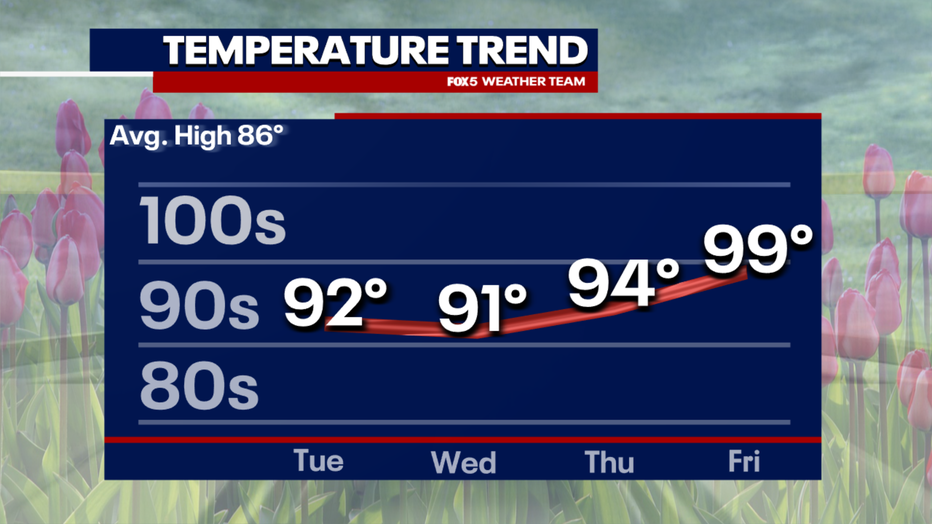
Over 250 million Americans are experiencing high temperatures of at least 90 degrees Fahrenheit (32.2 degrees Celsius) this week, primarily affecting the eastern part of the country. The Washington D.C.-area is also bracing for a prolonged heat wave, with temperatures potentially reaching or surpassing 100 degrees and record-challenging levels throughout the region.
The National Weather Service has issued warnings about the extreme heat, which could last at least two weeks. The longest day of the year is here, but it's not just warm; temperatures are soaring to uncomfortable levels. Humidity is starting to increase and will reach tolerable levels by the weekend.
The heat wave in D.C. area is expected to challenge dozens of records for heat across the Ohio Valley, Northeast, and Mid-Atlantic regions. Record highs and record warm lows are possible this week and into next week at Dulles International Airport.
Select pools and recreation centers in Washington D.C. have been opened to help residents cope with the heat emergency on Juneteenth.
The lack of rainfall could bring back drought concerns as soil moisture is lower than usual during a powerful heat wave near the solstice. Little to no rain is expected until late this weekend or early next week, with long-range forecasts pointing to more drier- and hotter-than-normal weather into July.
The Homeland Security and Emergency Management Agency (HSEMA) in D.C. is working with the National Weather Service to plan ahead for extreme heat patterns and ensure residents are prepared.
Despite the heat, it's important to remember that facts should not be biased or distorted. The media may report on extreme weather events, but it's crucial to approach these stories with a critical eye and seek out diverse sources of information.
